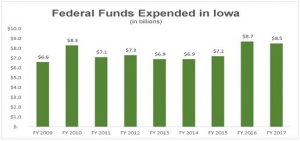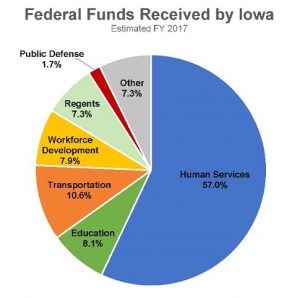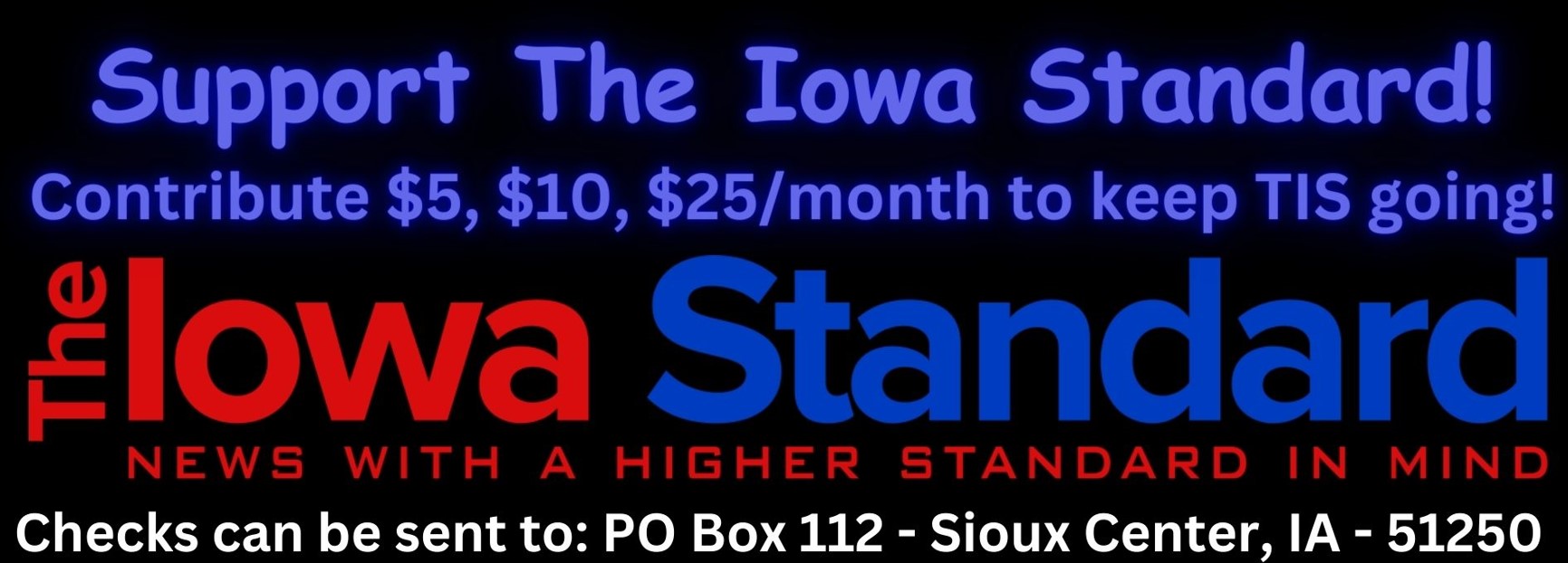Iowa, just as with other states, is dependent upon the federal government for financial assistance. In 2017, Iowa received $8.5 billion from the federal government and this growing dependency on Uncle Sam is dangerous not only because federal funds could be eliminated, but often these funds come with a cost. It is time that the Iowa legislature take an inventory of all federal funds, including grants, and measure the impact of those funds on the state, and what might happen if those funds were reduced or eliminated.
James Madison wrote in Federalist Paper 45 that “the powers delegated by the proposed Constitution to the federal government are few and defined. Those which are to remain in the State governments are numerous and indefinite.” The Constitution limited the powers of the federal government to the enumerated powers of Article 1, Section 8. Over time the federal government has grown in size and scope and the resulting leviathan does not reflect what Madison wrote in Federalist 45.
One of the consequences of the federal government’s disregard for constitutional limited government has been the erosion of federalism. States were supposed to be sovereign in many policy areas, but today the federal government is involved in almost every aspect of government.
President Ronald Reagan warned that states should not become mere administrative districts of the federal government. The Cato Institute notes that federal aid to states is an estimated $700 billion per year. Federal support is usually not “free” and often comes in the form of mandates which the states must follow to receive the funding. In addition, the Cato Institute argues that federal spending can also be more harmful to states:
“Furthermore, federal aid stimulates overspending by state governments and creates a web of complex federal regulations that undermine state innovation. At all levels of the aid system, the focus is on spending and regulatory compliance, not on delivering quality public services. The aid system destroys government accountability because each level of government blames the other levels when programs fail. It is a triumph of expenditure without responsibility.”

Since 2009 Iowa has received on average $7.5 billion from the federal government to supplement the state budget. In 2017, $8.5 billion was received from the federal government. Iowa’s state budget is $7.5 billion. Most of the aid is given to support Medicaid and education. The breakdown of Iowa’s support from the federal government includes:
⦁ Human Services: 57.0%
⦁ Education: 8.1%
⦁ Regents: 7.3%
⦁ Other: 7.3%
⦁ Workforce Development: 7.9%
⦁ Transportation: 10.6%
⦁ Public Defense: 1.7%

Medicaid, along with education, consumes the largest share of Iowa’s budget.
Federal funding to Iowa is never “free” money, because it comes from taxpayers.
In addition, federal funds in most cases come with specific requirements or “strings” and regulations that Iowa must follow. The legislature must also consider whether federal funding and mandates results in additional state spending to meet policy obligations. A full inventory of federal funds will not only allow for more transparency regarding the impact of federal dollars, but it will also provide legislators needed information to measure how much the federal government impacts the state budget.
The federal leviathan that has distorted traditional federalism also endangers policy innovation in the states. In policy areas such as education and health care federal involvement has driven up costs and often the results have not improved. It is almost impossible to think of even one aspect of daily life that is not somehow regulated by the federal government. The more Iowa becomes dependent upon the federal government, the more our state loses sovereignty
An additional danger exists with the growth of the federal government and that is the escalating national debt. Federal spending is out-of-control and the national debt is an estimated $21 trillion and there is no sign that spending will be reduced anytime soon. The national debt is projected to grow to $30 trillion by 2027. This does not include the unfunded entitlement liabilities of Social Security, Medicare, and Medicaid. It is estimated that these entitlement programs have over $80 trillion in unfunded liabilities.
“We owe more than we can easily repay. We spend too much and borrow too much. Worse, we promise too much. We conjure dollar bills by the trillions–pull them right out of thin air. I won’t insist that this can’t go on, because it has. I only say that it will eventually stop,” wrote James Grant, editor of Grant’s Interest Rate Observer. The national debt is one of our greatest national security risks in the 21st century.
It cannot be disputed that federal policy does have an impact on the states. Whether the issue is federal tax reform, trade policy, or the farm bill, Iowa will be impacted by decisions made in Congress. Nevertheless, Iowa must be prepared when Uncle Sam is no longer able to provide generous support to our state budget. An inventory of all federal funds and grants would allow the legislature to understand where the federal money is going, what regulations are being forced upon Iowa as a result, and what may happen if the funding is reduced or completely shut off.











